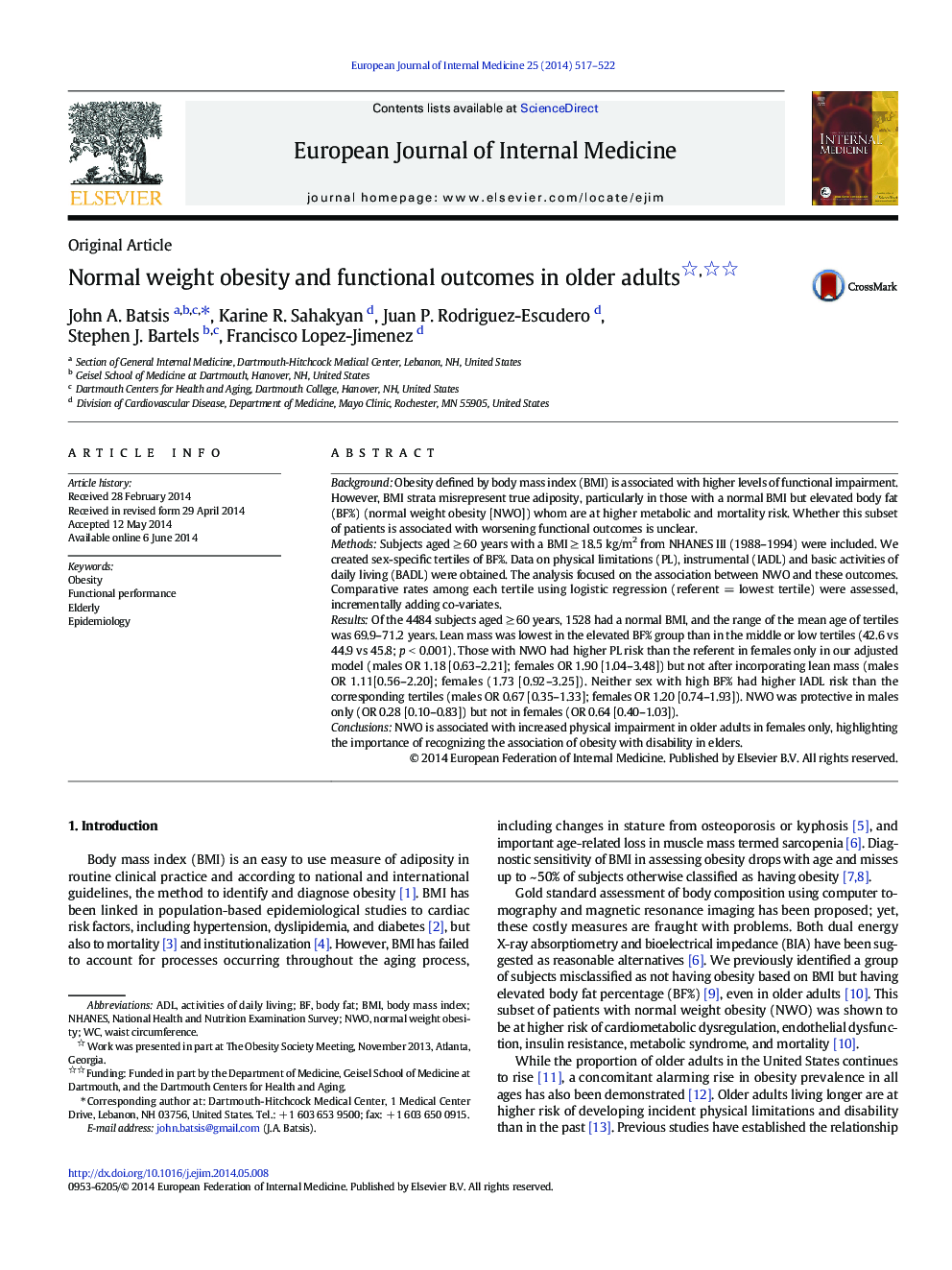| کد مقاله | کد نشریه | سال انتشار | مقاله انگلیسی | نسخه تمام متن |
|---|---|---|---|---|
| 3466513 | 1596554 | 2014 | 6 صفحه PDF | دانلود رایگان |
• Body mass index may not be an ideal measure of obesity.
• A subset of patients with normal BMI has elevated body fat.
• Females with a normal BMI but elevated body fat have higher rates of disability.
BackgroundObesity defined by body mass index (BMI) is associated with higher levels of functional impairment. However, BMI strata misrepresent true adiposity, particularly in those with a normal BMI but elevated body fat (BF%) (normal weight obesity [NWO]) whom are at higher metabolic and mortality risk. Whether this subset of patients is associated with worsening functional outcomes is unclear.MethodsSubjects aged ≥ 60 years with a BMI ≥ 18.5 kg/m2 from NHANES III (1988–1994) were included. We created sex-specific tertiles of BF%. Data on physical limitations (PL), instrumental (IADL) and basic activities of daily living (BADL) were obtained. The analysis focused on the association between NWO and these outcomes. Comparative rates among each tertile using logistic regression (referent = lowest tertile) were assessed, incrementally adding co-variates.ResultsOf the 4484 subjects aged ≥ 60 years, 1528 had a normal BMI, and the range of the mean age of tertiles was 69.9–71.2 years. Lean mass was lowest in the elevated BF% group than in the middle or low tertiles (42.6 vs 44.9 vs 45.8; p < 0.001). Those with NWO had higher PL risk than the referent in females only in our adjusted model (males OR 1.18 [0.63–2.21]; females OR 1.90 [1.04–3.48]) but not after incorporating lean mass (males OR 1.11[0.56–2.20]; females (1.73 [0.92–3.25]). Neither sex with high BF% had higher IADL risk than the corresponding tertiles (males OR 0.67 [0.35–1.33]; females OR 1.20 [0.74–1.93]). NWO was protective in males only (OR 0.28 [0.10–0.83]) but not in females (OR 0.64 [0.40–1.03]).ConclusionsNWO is associated with increased physical impairment in older adults in females only, highlighting the importance of recognizing the association of obesity with disability in elders.
Journal: European Journal of Internal Medicine - Volume 25, Issue 6, July 2014, Pages 517–522
